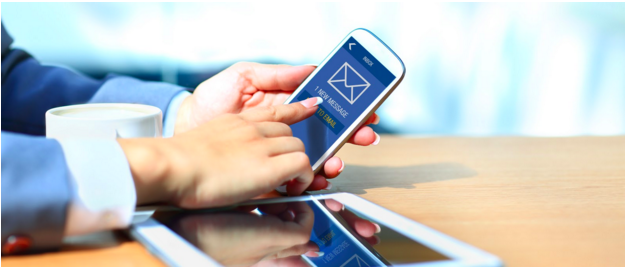
The standard for communication in the business world these days is email and instant messaging. Recently, instant messaging like Google Chat and other services have taken the role of primary communication for everyday issues and problems while email is used for more formal communication and things like sending files.
The heavy reliance on instant messaging has made many less formal in their emails of late, and has also made many less cautious when emailing. Less formal language, unsecured email platforms, and risky file transfers have flooded the email world and it’s time for you to take a stand to protect yourself and your colleagues from potential email disaster. We here at SendSafely have come up with some tips to improve your email safety.
1. Treat email as a formal communication method
When emailing at work, think before you send. Email is a valuable tool. Features like BCC and forwarding are always in play so you never know who could be reading the messages you send someone. Use proper english, use good grammar, and do not write something you wouldn’t want others to see. Contrary to popular belief, email is hardly ever private, so you should treat it that way.
2. Don’t use personal email platforms for business
When designating an email for business, make sure to create an email address that utilizes your business domain name (you@company.com). An email address with a business domain name attached adds validity and seems more official to the recipient. Sending business emails from a Gmail/Yahoo/Aol account creates the impression that you are working out of your basement, not that of a real business. Be sure everyone in your company utilizes this, it makes your team look more put together and professional. Most large providers like Gmail and Yahoo even offer a very low cost (or free) option to use your own domain name with their service.
3. Encrypt sensitive emails
You may think that email is a private and secure form of messaging, but this is only true if you take the right security precautions. When you send an email, it passes through several insecure servers that are vulnerable to hacking and other nasty things. Sending an email is like sending a postcard in the mail...the information it contains is visible to anyone that handles it. Even worse, many systems will store a copy of every email they see resulting in numerous copied If you need to send sensitive information within an email, make sure you use encryption so that only those intended to see your message can read it. Most email services do not have a built-in way to encrypt sensitive emails, so you may need to use a third-party add-on like SendSafely. These add-ons integrate right into Outlook or Gmail, and don’t require your recipients to have any special software installed to view the message.
4. Secure confidential attachments
Email attachments are the most convenient method for sending someone a file. When sending files via email, it is important to consider what information in the file and take adequate security measures to protect those files from unauthorized access. Like the email message, attachments are also visible to every system the email passes through and may be copied/stored on intermediary servers. Files with personally identifiable information (like your tax return, bank statements, etc) are of most concern since they can be valuable to identity thieves.
Most file sharing platforms, like Dropbox and Google Drive, offer convenient ways to integrate with popular email platforms. While these platforms do provide more protection than sending the file over email, keep in mind that your files are still not protected from unauthorized access if someone gains access to your file sharing account (or more likely, their systems get hacked). Consider using a file sharing platform that uses end-to-end encryption, like SendSafely. With end-to-end encryption, only the people communicating can read the messages. No eavesdropper can access the encryption keys needed to decrypt the conversation, including telecom providers, internet providers and the even company that runs the messaging service.
5. Always enable 2-step verification
When configuring your email login credentials, make sure to enable two step verification whenever it is offered to reduce the risk of unauthorized access to your email account. Gaining access to an unsecured email account is easy, just figure out the password and you’re in. By adding 2 step verification, a hacker has to have access to your phone as well making the process much harder and much more secure. It only takes a few minutes to enable the feature and it can save you the trouble of having your data breached.
SendSafely: Simple to Use End-to-end Encryption for Email and File Transfer
If you are a real estate professional looking for a simple to use email encryption and secure file transfer platform, consider taking a look at SendSafely. Our enterprise platform integrates seamlessly with Microsoft Exchange and Google Apps for Business.
